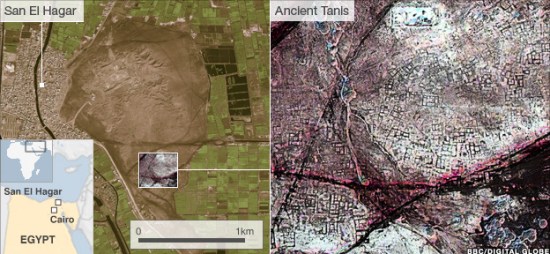17 Lost Pyramids Found In Satellite Survey of Egypt
University of Alabama at Birmingham Egyptologist Dr. Sarah Parcak and her team analyzed images taken from satellites orbiting 700 km above the earth, using infrared imaging to highlight different materials under the surface, and discovered 17 lost pyramids, over 1,000 tombs and over 3,000 ancient settlements. BBC News reports that initial excavations have already confirmed some of the findings.
How is infrared imaging able to differentiate between the mud bricks ancient Egyptians used to build structures and soil and earth? The mud bricks are more dense than the surrounding soil, and as a commenter on Hacker News points out, the higher density of the bricks means they absorb more light, as well as absorb different regions of light in the spectrum, and is thus detectable due to the light that is reflected back.
Among the initial excavations, the city streets of the ancient city of Tanis were revealed near the modern-day city of San El Hagar. A 3,000-year-old house has since been excavated, and the outline of the structure almost perfectly matches what the satellite imagery had shown, thus validating the method of exploration and quite probably the rest of Parcak’s team’s findings. The discovered sites are just the tip of the sandberg, as Parcak theorizes many more sites are buried even deeper, covered by the silt of the River Nile. The satellite method, if put into common use, would allow teams to find better starting points when faced with a large site, and in theory, would make the exploration and excavation processes move more quickly than they have in the past.
(BBC News via Hacker News)
Have a tip we should know? tips@themarysue.com
